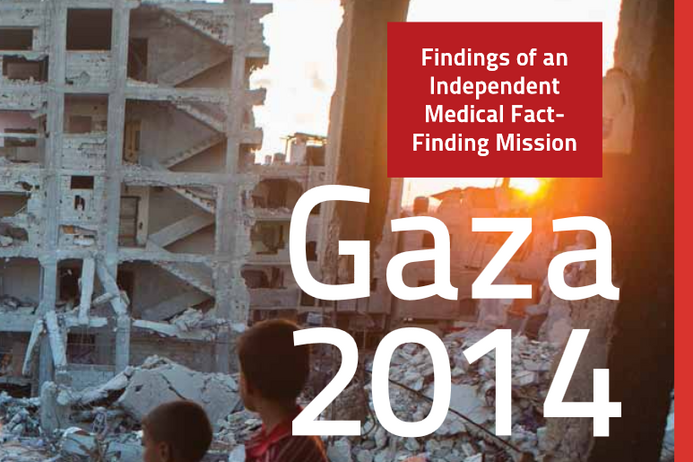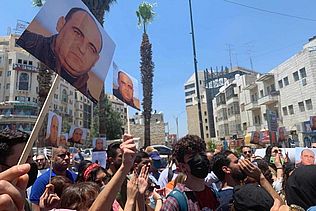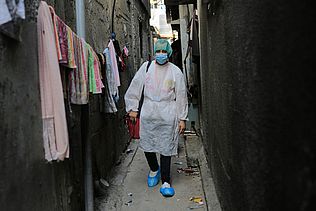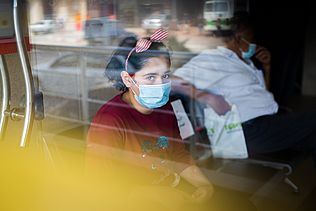Laut PHR-IL zeigt der Bericht „die Diskrepanz zwischen den Verlautbarungen des Militärs Menschenleben zu schonen und dem Vorgehen während der Kämpfe, welches zu tausenden Verletzen und Toten führte, da es keinen sicheren Zufluchtsort für die Bewohner des Gazastreifens gab.“
Der Bericht wurde, in Zusammenarbeit mit Menschenrechtsorganisationen aus Israel und dem Gazastreifen, von acht Gesundheitsexperten verfasst. Es ist die einzige internationale, unabhängige Untersuchungsgruppe, denen die israelischen Behörden die Einreise in den Gazastreifen während des Krieges erlaubten, um medizinische und gesundheitsbezogene Informationen zu sammeln.
Anhand zahlreicher Beispiele verdeutlicht der Bericht, warum so viele Zivilisten durch die Militäroffensive ums Leben kamen: Versagen des Vorwarnsystems, fehlende Fluchtwege, Zusammenbruch des Evakuierungsmechanismus für Verwundete und Angriffe auf Rettungskräfte.
Verantwortlich für eine hohe Zahl von Opfern sind sog. „Doppelschläge“, bei denen nach einem Angriff die zu Hilfe eilenden Verwandten und Rettungskräfte von nachfolgendem Beschuss getroffen werden.
Außerdem stellen die Experten das Versagen des Koordinierungsmechanismus zwischen der israelischen Armee, dem Roten Kreuz und dem Palästinensischen Roten Halbmond fest. Durchschnittlich vergingen zehn Stunden bis zur Bergung der Verletzten. Vielfach wurde sie gänzlich unmöglich gemacht. In extremen Fällen, wie bei den Angriffen auf Khuza'a in der Nähe von Khan Younis, nahm die Koordination bis zu acht Tage in Anspruch.
Viele Zeugenaussagen dokumentieren Angriffe auf medizinische Einrichtungen und Rettungskräfte, obwohl das palästinensische Gesundheitsministerium die Kennzeichnungen von Krankenwagen und medizinischen Teams, sowie die Koordinaten der Gesundheitseinrichtungen an die israelischen Armee übermittelte.
Nach Angaben der Weltgesundheitsorganisation und des palästinensischen Gesundheitsministeriums wurden 23 medizinische Fachkräfte getötet und 83 weitere verletzt. 45 Krankenwagen, 17 Krankenhäuser und 56 Gesundheitseinrichtungen wurden beschädigt oder zerstört.
Die Frankfurter Hilfs- und Menschenrechtsorganisation medico international fordert deshalb weitere unabhängige Untersuchungen. Die israelische Armee könne dies, aufgrund der eigenen Verwicklung nicht unvoreingenommen tun. „Israel sollte der Untersuchungskommission des UN-Menschenrechtsrates eine ungehinderte Arbeit ermöglichen und den Experten die Einreise nach Israel und Gaza gestatten“, sagt Riad Othman, medico-Repräsentant in Israel und Palästina.
Hinweise an die Redaktionen:
- Den vollständigen Bericht „No Safe Place“ (engl. 237 Seiten) finden Sie als PDF unter www.medico.de/gazaNoSafePlace oder auf http://gazahealthattack.com/
- - Gerne vermitteln wir Ihnen Interviews mit unseren Partnerorganisationen in Israel und dem Gazastreifen. Auch Riad Othman, unser medico-Repräsentant vor Ort, der im Rahmen der Menschenrechts- und Wiederaufbauprojekte regelmäßig auch den Gazastreifen bereist, steht für Interviews zur Verfügung.
Das ePaper wird erst nach dem Anklicken geladen. Dazu baut ihr Browser eine direkte Verbindung zu Issuu.com auf. Mehr Informationen erhalten Sie in unserer Datenschutzerklärung.
Dokumentation:
Executive Summary: Gaza 2014 - Findings of an Independent Medical Fact-Finding Mission (FFM)
On 8 July 2014, Israel initiated a military offensive in the Gaza Strip. Although accounts vary, most estimates put the number of residents of Gaza killed in the 50-day armed conflict at over 2,100, of whom at least 70% were civilians, including over 500 children. Over 11,000 were wounded and over 100,000 made homeless. According to Israeli
official accounts, 73 Israelis were killed: 67 soldiers and 6 civilians, including one child and one migrant worker. 469 soldiers and 255 civilians were wounded.
Questions arose regarding violations of international human rights and humanitarian law in the course of the conflict. In July 2014, following discussions with Al Mezan Center for Human Rights, Physicians for Human Rights-Israel (PHR-Israel) commissioned a fact-finding mission (hereafter ‘FFM’) to Gaza, whose aim was to gather evidence and draw preliminary conclusions regarding types, causes and patterns of injuries and attacks; attacks on medical teams and facilities; evacuation; impact of the conflict on the healthcare system; and longer-term issues including rehabilitation of the wounded, mental health, public health and displacement.
PHR-Israel recruited 8 independent international medical experts, unaffiliated with Israeli or Palestinian parties involved in the conflict: four with special expertise in the fields of forensic medicine and pathology; and four experts in emergency medicine, public health, paediatrics and paediatric intensive care, and health and human rights.
The FFM made three visits to the Gaza Strip between 19 August and 12 November 2014. Access and meetings were facilitated by PHR-Israel in partnership with local Palestinian non-governmental organisations: the Al Mezan Center for Human Rights, the Gaza Community Mental Health Programme (GCMHP) and the Palestinian Center for Human Rights in Gaza (PCHR).
Meetings and site visits were held in medical facilities and in the community, and included interviews with victims, witnesses, healthcare professionals and human rights workers, officials from the Gaza Ministries of Health and Justice, and representatives of international health organisations in Gaza and the West Bank. Wherever possible, forensic, medical and other material evidence was collected to support oral testimonies.
The FFM interviewed 68 hospitalised patients who had been injured in the course of the attacks, in different hospitals, most of them outside Gaza. See Appendix 1 for transcripts.
Findings
- The overwhelming majority of injuries causing death or requiring hospitalisation seen by the FFM were the result of explosion or crush injuries, often multiple complex injuries;
- A majority of hospitalised patients interviewed reported people being injured or killed while in, or very close to, their homes or those of relatives and neighbours;
- Numerous cases in which
- significant numbers of casualties including members of the same family and rescuers were killed or injured in a single incident;
- ‘double tap’ or multiple consecutive strikes on a single location led to multiple civilian casualties and to injuries and deaths among rescuers;
- heavy explosives were used in residential neighbourhoods, resulting in multiple civilian casualties;
- emergency medical evacuation was not enabled and/or in which medical teams were killed or injured in the course of evacuation of the injured (notably in Shuja’iya, Gaza City);
- At least one case in which a mine-breaching explosive device (tsefa shirion) was used in a residential street in Khuza’a, Khan Younis, causing massive destruction.
- At least one case, of Shuhada’ Al Aqsa Hospital in Deir Al Balah, where several people were killed and injured in what was apparently a deliberate attack on the hospital on 21 July 2014.
An in-depth study of the town of Khuza’a suggests that:
- A convoy of hundreds of civilians came under fire while attempting to flee the town on 23 July 2014;
- A medical clinic in which civilians and injured people were sheltering after this attack was hit by missiles, causing deaths and injuries;
- A seriously injured 6-year-old child was not assisted and his evacuation was obstructed despite eye contact with troops on the ground on 24 July. He later died;
- Civilians in a house occupied by Israeli soldiers suffered abuse and ill-treatment including beatings, denial of food and water, and use as human shields. One was shot dead at close range.
In addition, the FFM examined:
- The strains placed on hospitals in Gaza during the attacks;
- Problems with referral and evacuation of patients from Gaza hospitals to hospitals outside;
- Long-term internal displacement in Gaza as a result of the partial or total destruction of about 18,000 homes;
- Long-term psychosocial and mental health damage caused by this and previous wars;
- An increased need for rehabilitation services and insufficient current resources in Gaza to meet them.
Conclusions
- The attacks were characterised by heavy and unpredictable bombardments of civilian neighbourhoods in a manner that failed to discriminate between legitimate targets and protected populations and caused widespread destruction of homes and civilian property. Such indiscriminate attacks, by aircraft, drones, artillery, tanks and gunships, were unlikely to have been the result of decisions made by individual soldiers or commanders; they must have entailed approval from top-level decision-makers in the Israeli military and/or government.
- The initiators of the attacks, despite giving some prior warnings of these attacks, failed to take the requisite precautions that would effectively enable the safe evacuation of the civilian population, including provision of safe spaces and routes. As a result, there was no guaranteed safe space in the Gaza Strip, nor were there any safe escape routes from it.
- In numerous cases double or multiple consecutive strikes on a single location led to multiple civilian casualties and to injuries and deaths among rescuers.
- Coordination of medical evacuation was often denied and many attacks on medical teams and facilities were reported. It is not clear whether such contravention of medical neutrality was the result of a policy established by senior decision-makers, a general permissive atmosphere leading to the flouting of norms, or the result of individual choices made on the ground during armed clashes.
- In Khuza’a, the reported conduct of specific troops in the area is indicative of additional serious violations of international human rights and humanitarian law.
Recommendations
The FFM
- Calls upon the UN, the EU, the US and other international actors to take steps to ensure that the governments of Israel and Egypt permit and facilitate the entry of investigative teams into Gaza, including experts in international human rights law and arms experts. This has not yet been done, months after the offensive;
- Draws attention to the independence and credibility of the local Palestinian civil society groups (Al Mezan, PCHR and GCMHP), and encourages the international community to support and recognize their efforts to collate evidence in Gaza, in order to proceed with legal and/or other remedies as well as to seek justice and/or reparations;
- Believes that the prima facie evidence collected and presented in this Report should be used for the purposes of legal determination of violations of international human rights and humanitarian law, whether through local or international justice mechanisms. It is willing to assist and provide evidence to any credible investigation established for this purpose, and;
- Recommends further urgent and rigorous investigation into the impact of this war, as well as the previous armed conflicts, on public health, mental health and the broader social determinants of health in Gaza. In this assessment, the implacable effects of the on-going occupation itself must be taken into account.
Kontakt
Für Nachfragen und Interviewwünsche wenden Sie sich bitte an:
- Bernd Eichner, Pressereferent: Tel. 069/94438-45 oder eichner@medico.de
- Riad Othman, Repräsentant in Israel und Palästina: Tel. +972 59 9997 418
oder +972 54 653 9790 und ho-jlem@medico.de





